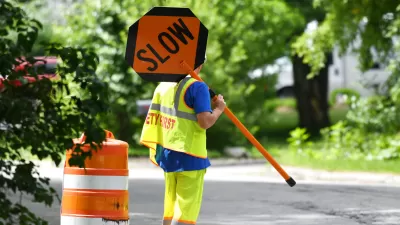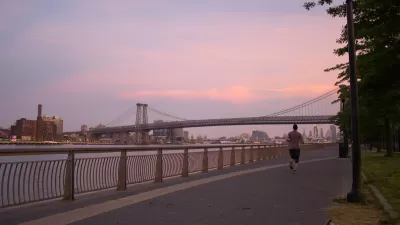Roberta Brandes Gratz examines the many differences, and few similarities, between the two most devastating urban storms of recent memory. Among the most elemental differences: one devastated neighborhoods, one a city; one was man-made, one natural.
Gratz compares the causes, impacts, and responses to Hurricanes Katrina and Sandy. And the comparisons demonstrate that Katrina's impact on New Orleans, caused by the failure of the city's levees, and the government's bungled response, "incapacitated by systemic breakdowns and leadership vacuums," is without compare.
"The point here is not to belittle Sandy and the damage it wrought," says Gratz. "Yet, the differences between the two hurricanes are many, and require radically new responses."
"But good news is evident in both disasters. Communities came together. Volunteers appeared from everywhere to lend a hand. New support networks were forged. Fundraising was impressive. Once again, evidence was clear that Americans don’t wait for government to rescue them – but they do expect it to be there when all else fails."
"Now the question is: Can the evidence and the new solutions that have been revealed be translated into real action before the next disaster?"
FULL STORY: Two Storms, Two Cities: Not Many Parallels Between Sandy, Katrina

Study: Maui’s Plan to Convert Vacation Rentals to Long-Term Housing Could Cause Nearly $1 Billion Economic Loss
The plan would reduce visitor accommodation by 25,% resulting in 1,900 jobs lost.

North Texas Transit Leaders Tout Benefits of TOD for Growing Region
At a summit focused on transit-oriented development, policymakers discussed how North Texas’ expanded light rail system can serve as a tool for economic growth.

Why Should We Subsidize Public Transportation?
Many public transit agencies face financial stress due to rising costs, declining fare revenue, and declining subsidies. Transit advocates must provide a strong business case for increasing public transit funding.

How to Make US Trains Faster
Changes to boarding platforms and a switch to electric trains could improve U.S. passenger rail service without the added cost of high-speed rail.

Columbia’s Revitalized ‘Loop’ Is a Hub for Local Entrepreneurs
A focus on small businesses is helping a commercial corridor in Columbia, Missouri thrive.

Invasive Insect Threatens Minnesota’s Ash Forests
The Emerald Ash Borer is a rapidly spreading invasive pest threatening Minnesota’s ash trees, and homeowners are encouraged to plant diverse replacement species, avoid moving ash firewood, and monitor for signs of infestation.
Urban Design for Planners 1: Software Tools
This six-course series explores essential urban design concepts using open source software and equips planners with the tools they need to participate fully in the urban design process.
Planning for Universal Design
Learn the tools for implementing Universal Design in planning regulations.
City of Santa Clarita
Ascent Environmental
Institute for Housing and Urban Development Studies (IHS)
City of Grandview
Harvard GSD Executive Education
Toledo-Lucas County Plan Commissions
Salt Lake City
NYU Wagner Graduate School of Public Service





























